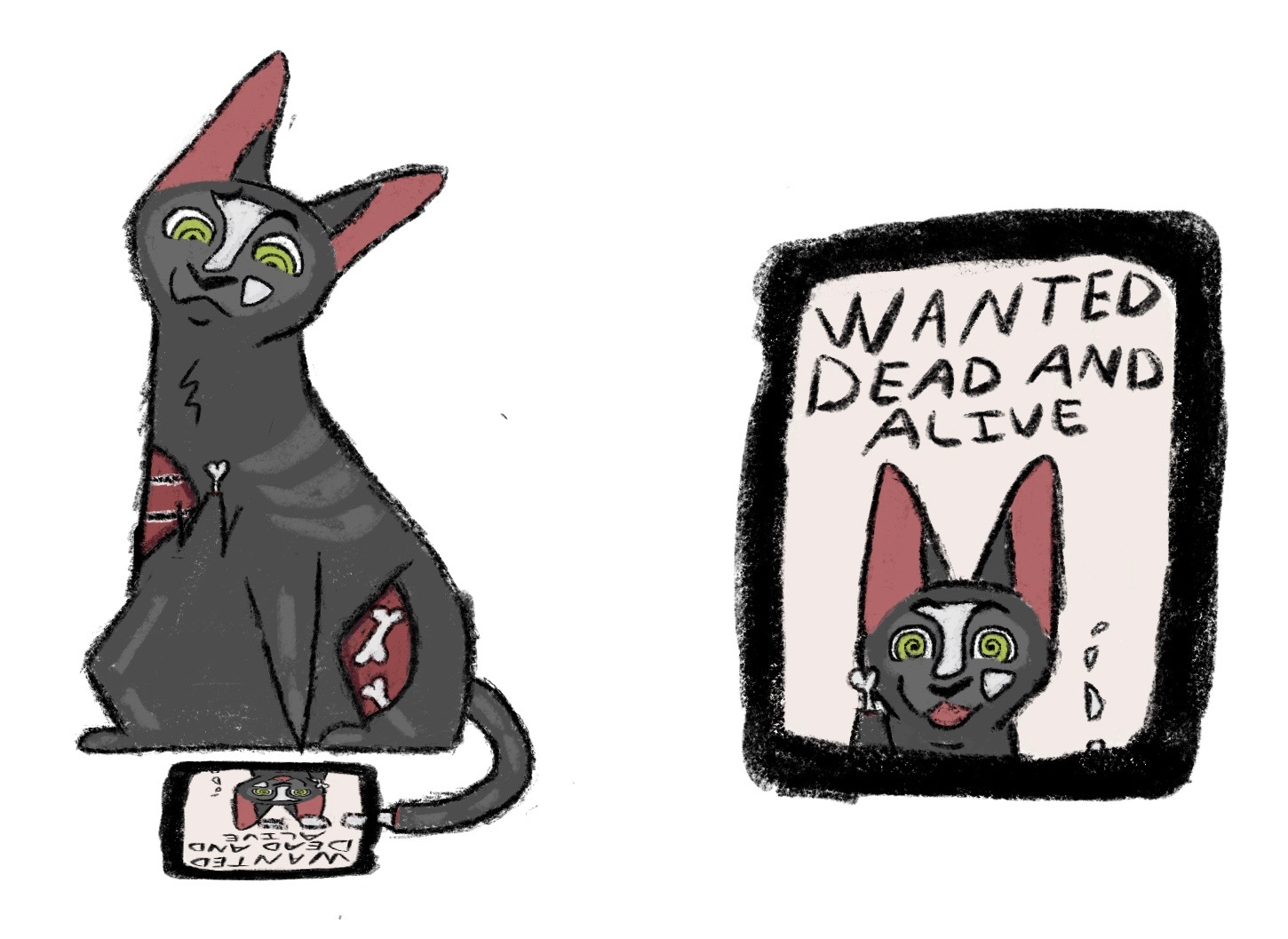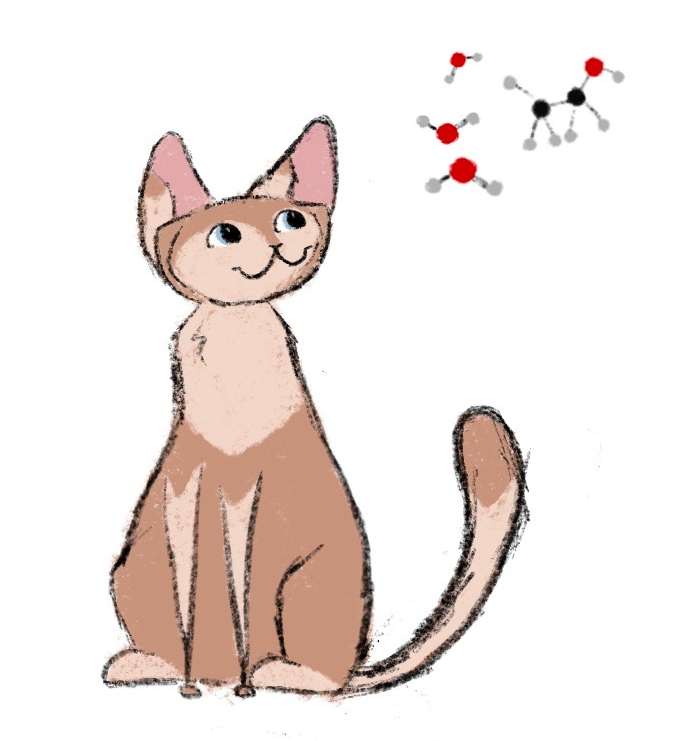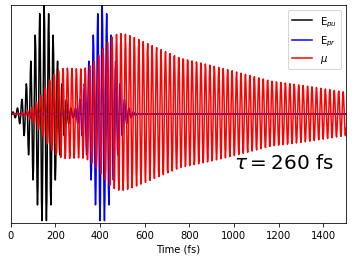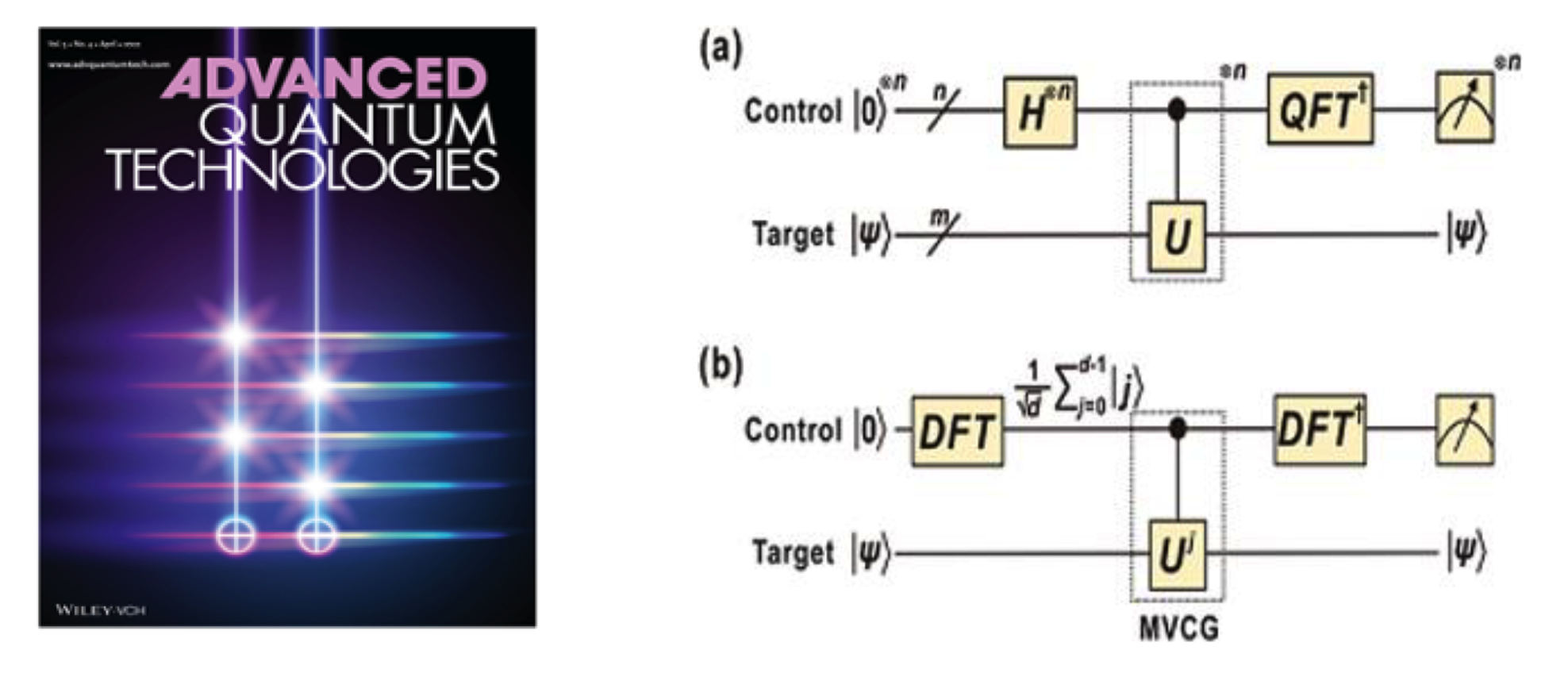Graduate-level courses
- Quantum Mechanics I (CHM 671)
- Quantum Mechanics II (CHM 672)
- Computational Quantum Mechanics (CHM 673)
- Chemical Reaction Dynamics (CHM 675)
- Molecular Spectroscopy (CHM 676)
- Thermodynamics and Statistical Mechanics (CHM 682)
- Computational Chemistry (CHM 579)
- Special Topics courses (CHM 696)
Undergraduate-level courses
- Physical Chemistry for Engineers (CHM 370)
- Physical Chemistry I (CHM 37300)
- Physical Chemistry Laboratory (CHM 37301)
- Physical Chemistry II (CHM 374)
Quantum Mechanics I (CHM 671)

Instructor Hanzhe Liu email
Syllabus This is an introductory course aiming to provide chemistry students with basic understanding of concepts, applications, and mathematical formalism of Quantum Mechanics. The goal of the course is two-fold: to provide sufficient mathematical background for the students interested in advanced quantum mechanics and spectroscopy courses, and to broaden conceptual understanding of QM and discuss a variety of chemically-relevant examples and models to those not planning to delve deeper into the quantum world. Some of the assignments will be based on Python programming which will be introduced in the course. An undergraduate course in Physical Chemistry is a formal prerequisite but students with various backgrounds are welcome.
Topics covered:
- Historical background and modern interpretation of QM
- Main concepts: wave function and Schrodinger equation
- Case studies: particle in a box, harmonic oscillator, finite well, Hydrogen atom
- Spin and angular momentum; many-particle systems
- Tools of QM: perturbation theory and variational principle
- QM and chemistry: understanding atoms, molecules, and solids
Textbooks and Resources
- Required:
- D. Griffiths, Introduction to Quantum Mechanics, 2nd or 3rd edition
- Recommended:
- I. Levine, “Quantum Chemistry” (2013)
- D. Ben-Amotz, “Understanding Physical Chemistry” (The latest PDF edition of the textbook will be provided to students in this course free of charge)
- J. Schrier, Introduction to Computational Physical Chemistry, (University Science Books, 2017)
- J. Simons, “An Introduction to Theoretical Chemistry” (2003)
Typically offered Fall
Quantum Mechanics II (CHM 672)
Instructor Valentin Walther email
Syllabus The main goal of the course is to introduce advanced topics and methods in quantum mechanics. Starting from the axioms of quantum mechanics, this course covers time dependent systems, many-body formalism, perturbative methods, and scattering theory. The goal is to provide the basic concepts and theoretical methods for students to independently explore advanced topics in more detail, which will also be part of student projects towards the end of the course.
Topics covered:
- Review: the basis postulates of quantum mechanics
- Identical particles and second quantization
- Hartee-Fock approximation
- Ideal quantum gases
- Time-dependent perturbation theory, Fermi’s Golden Rule
- Scattering theory
Prerequisites
- Basic quantum mechanics
- Chemistry students are expected to have taken CHM-67100.
Textbooks and Resources
- Optional
- Griffiths, Introduction to Quantum Mechanics
- Sakurai, Modern Quantum Mechanics
- Shankar, Principles of Quantum Mechanics
Typically offered Spring
Computational Quantum Mechanics (CHM 673)

Instructor Lyudmila Slipchenko email
Syllabus This course aims to give the students both theoretical and practical background in the computational techniques used in modern quantum chemistry. A significant fraction of the students’ time will be spent actually using quantum chemistry programs. The last assignment will provide a chance for students to perform an independent computational project related to their research interests and present a seminar to the class. A solid undergraduate background in Physical Chemistry or, preferably, Quantum Mechanics, will suffice as a prerequisite.
Topics covered:
- Schrodinger equation. Review of QM. Born-Oppenheimer approximation.
- Chemical reactions and potential energy surfaces.
- Orbitals and Slater determinants. Theoretical model chemistries.
- Hartree-Fock theory. Koopmans’ theorem.
- Basis sets.
- Molecular orbitals. Point group symmetry.
- Spin operators. Restricted and unrestricted HF.
- Density functional theory.
- Electron correlation. Configuration interaction. Size-consistency problem. Wave function versus electron density approaches.
- Dynamical correlation. Second-order perturbation theory. Coupled cluster theory. Extrapolation techniques. Performance of electronic structure methods.
- Non-dynamical correlation. Multi-configuration SCF.
- Electronic excited states. CIS, TD-DFT, EOM-CCSD
- Chemistry of extended and periodic systems: solvation models, QM/MM, fragmentation methods
Textbooks and Resources
- Required:
- F. Jensen, Introduction to Computational Chemistry, (Wiley, New York, 2017)
- A. Szabo and N. S. Ostlund, Modern Quantum Chemistry, Introduction to Advanced Electronic Structure Theory, 1st ed., revised (Dover, 1996)
- Optional
- J. Schrier, Introduction to Computational Physical Chemistry, (University Science Books, 2017)
Typically offered Spring
Chemical Kinetics (CHM 675)
Instructor Libai Huang email
Syllabus Chemical kinetics focuses on the rates of processes and how chemical reactions take place. This subfield of physical chemistry is the one most concerned with the “how, why, and when” of chemical reaction.
Topics covered:
- Kinetics modeling
- Born-Oppenheimer approximation
- Partition functions
- Potential Energy Surfaces
- Transition state theory
- Marcus Theory
- Forster energy transfer
- Photochemistry
- Ultrafast spectroscopy
Textbooks and Resources
- Chemical Kinetics and Reaction Dynamics by Paul Houston
- handouts
Typically offered Fall
Molecular Spectroscopy (CHM 676)

Instructor Mike Reppert email
Syllabus This course offers an overview of fundamental theory and applications in optical and infrared spectroscopy. Topics addressed will include: electrodynamics, response theory, linear and nonlinear experimental methods (including two-dimensional spectroscopy), density matrix dynamics, harmonic and excitonic molecular models, dephasing and decoherence.
Expected learning outcomes:
- An intuitive understanding of the physical principles behind molecular spectroscopy
- A basic familiarity with both classical and modern experimental spectroscopic techniques, and
- The computational skills needed to process experimental spectroscopic data and to build and test simple physical models.
Textbooks and Resources No textbooks are required for this course. All lecture content (notes and textbook) are available online:
- lecture notes from the most recent year
- PDF copy of the textbook
- course nanoHUB page, which hosts interactive Python learning modules and exercises.
As a reference, however, some students may find Becker’s textbook useful:
- Richard Becker, Electromagnetic Fields and Interactions, vols. 1-2. Available from Dover Books on Physics.
Typically offered Fall
Statistical Thermodynamics (CHM 682)

Instructor Ming Chen email
Syllabus The course primarily focuses on providing an introduction to elementary thermodynamics and statistical mechanics, with a particular emphasis on their applications in chemistry.
Topics covered:
- laws of thermodynamics
- thermodynamic functions
- phase transitions
- chemical reactions
- Lagrangian and Hamiltonian mechanics
- Liouville’s equation
- ergodic theory
- molecular dynamics
- microcanonical, canonical, grand canonical ensembles
- statistical mechanics of liquids
- quantum ensemble theory
- strongly degenerate Bose/Fermi gas
- non-equilibrium statistical mechanics
- linear-response theory
- Green-Kubo relations
Textbooks and Resources
- “An Introduction to Modern Statistical Mechanics” by David Chandler
- “Statistical Mechanics: Theory and Molecular Simulation” by Mark E. Tuckerman
- lecture notes
Typically offered Fall
Quantum Information (CHM 696)

Instructor Sabre Kais email
Syllabus This course provides an introduction to the theory of quantum computation and quantum information.
Topics covered:
- Fundamental Concepts
- Quantum Computation
- Quantum Information
- Quantum Algorithms
- Physical Implementations of Quantum Computation
- Near Term Applications of Quantum Computing
Textbooks and Resources
- Michael A. Nielsen and Isaac L. Chuang, “Quantum Computation and Quantum Information”, 10th Anniversary Edition; ISBN-13: 978-1107002173
Typically offered Fall
Density Functional Theory (CHM 696)
Instructor Adam Wasserman email
Course description: Density Functional Theory (DFT) is a useful computational approach to solve the electronic Schrödinger equation for molecules and materials. This course will cover the essential fundamental and practical aspects of DFT:
- What are density functionals?
- Where do they come from?
- Why do they work?
- When do they fail?
- How can we use them in practice to understand the electronic properties of molecules and materials?
Prerequisite: The course is suitable for beginning graduate students or for undergraduate science and engineering students who have had a first course on Quantum Mechanics (e.g. the one-electron Schrödinger equation and basic linear algebra), such as CHM-373 at Purdue.
Typically offered Spring
Quantum Optics (CHM 696)
Instructor Valentin Walther email
Syllabus The main goal of the course is to provide a solid introduction to light-matter interactions required to understand modern quantum optics and quantum information science. By the end of the course, students will be ready to carry out research on classical and quantum light, open quantum optical systems, cavity electrodynamics, and more. A second goal of the course is to familiarize students with primary quantum optics literature, which will be discussed in class, as well as modern numerical techniques used in quantum optics.
Topics covered:
- Semiclassical Light-Atom-Interaction, Optical Bloch Equations
- Quantization of the Electromagnetic Field, (Fock States, Coherent States, Squeezed States)
- Quantized Light-Atom Interaction: Jaynes-Cummings-Model
- Dressed State Picture
- Quantum-Rabi Oscillations
- Cavity Quantum Electrodynamics, Nondestructive Detection of a Photon
- Wigner-Weisskopf-Theory of Spontaneous Emission
- Methods for Open Quantum Systems, Master Equation, Monte Carlo Wave Functions
- Propagation of Light in Resonant Media
- Resonance Fluorescence, Mollow Triplett
- Three Level Systems, STIRAP, EIT
- Classical Coherence Theory
- Correlations and Photon Statistics
- Spatial and Temporal Coherence
- Intensity Fluctuations, Hanbury Brown & Twiss Experiment
Additional topics:
- Entanglement, EPR Experiments and Bell’s Inequalities
- Schrödinger Cat States
- Quantum Teleportation
- Basic elements of Quantum Information Processing
- Quantum Cryptography
Prerequisites Basic knowledge in atomic physics and quantum mechanics.
Textbooks and Resources
- Recommended:
- Christopher Gerry, Peter Knight – Introductory Quantum Optics (Cambridge University Press 2006)
- Marlan O. Scully, and M. Suhail Zubairy – Quantum Optics (Cambridge University Press)
- Mark Fox – Quantum Optics (Oxford University Press)
- C. Cohen-Tannoudji, J. Dupont-Roc, and G. Grynberg – Atom Photon Interactions (Wiley-Interscience)
- Daniel A. Steck – Quantum and Atom Optics, available for download
Typically offered Fall
Mathematical Methods for Chemists (CHM 696)
Instructor Jonathan Hood email
Syllabus This math methods course for chemistry graduate students will cover a range of mathematical techniques with a focus on their applications in quantum mechanics. Topics will include linear algebra, eigenvectors, differential equations, partial differential equations, Fourier series and transforms, Laplace transforms, complex analysis, coding in python, machine learning, and optimization.
Learning outcomes
- Learn the foundations of linear algebra, differential equations, and Fourier transforms in order to help with graduate research.
- Introduction into machine learning and how it can help your research
- Gain experience coding in Python and Tensor Flow.
Textbooks and Resources
- Required textbook:
- Mary L. Boas “Mathematical Methods in the Physical Sciences” 3rd edition
- Optional textbook:
- Mathematical Methods for Physicists, Arfken
Typically offered Spring